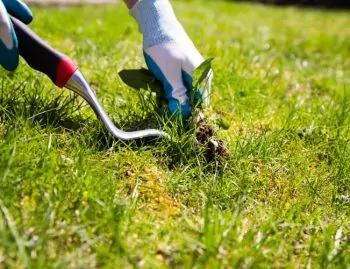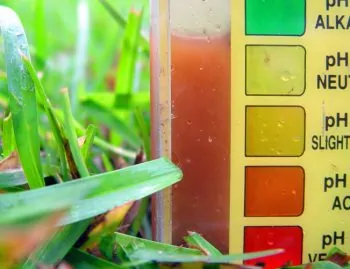As a Midwesterner, you only get so many months to fully explore your lawn. We understand how cherishable this is having family memories made straight from the yard. On the flip, to truly enjoy your lawn you need to take good care of your grass. Otherwise, pests and weeds will soon linger if you’re not as careful.
Luckily, we have gone our way to give you a comprehensive guide on how to take care of your lawn all season! So, why don’t we dive in?
First things first…
Lawn Care Quote
Having a well-maintained garden is no different than taking care of other areas in our lives. Consistent routine care and maintenance will give you the same benefits as personal hygiene, pet care, and even car cleaning.
That being said, our approach really matters. Deciding when and how to weed are the two main factors that’ll determine how lush your lawn will be during the ‘fun’ months. The tools and technique you choose separate the regular lawnmower from a stellar garden pro.
Tools
You might be thinking why do you need tools when you can prune out the weeds using your bare hands. Well, ever wondered why they keep coming back? You need to get proper gardening tools to keep away the persistent weeds. A hand fork may do the trick. If the soil is tough, you might need a shovel or a Japanese hoe.
Gardening tools allow you to remove the weeds from its roots. When you fully remove the plant, they have nil chance of growing back.
Technique
Weeding is not your average weekend job if you’re really determined to have a flawless lawn. Apart from grabbing the right tools, you’ll need to plan ahead on how you’re going to do it. Determine the size of the area that you want to weed and consider what types of weeds are growing in it.
For instance, crabgrass only needs a claw to remove, while deeply-rooted Amaranth calls for a shovel.
Best Grass Types For Your Lawn
It goes without saying that the kind of grass that you choose determines how good-looking your lawn will be. Knowing these types helps you choose what to grow and during what time of the season.
Common grass types found in Midwestern lawns include Kentucky Bluegrass, Perennial Ryegrass, and Fine Fescue.
Fine Fescue
Good for
- Shade areas
- Arid and semi-arid soils
Bad
- High temperatures
- Wet soil
Perennial Ryegrass
Good for
- Quick establishment of cover
- Wear tolerance
Bad
- Cold season
- Standalone cover
Kentucky Bluegrass
Good for
- Best appearance quality
- Low-temperature tolerance
Bad
- Less tolerant to shade
- Grows slowly
Weeds To Look Out For
Now that you have a rough idea of what types of grass you need, the next thing is to identify weeds to root. You don’t want to confuse a Kentucky Bluegrass with crabgrass (or a similar weed).
Here are common weeds spread across the Midwest that you should probably know about.
Clover
While the flowers look great, clovers are not your best friend when it comes to lawn care. It is a perennial weed that grows well in moist conditions. It varies in flower color and leaf shape. Clover has a peculiar creeping mode that’s tough once it’s established in your lawn.
Crabgrass
Crabgrass is an annual weed that grows during the warm season or anytime there is enough sunlight, bare soil, and water. You don’t want a crabgrass invasion if you’re not ready to spend hours removing them. Luckily proper mowing can help prevent crabgrass from visiting your lawn.
Dandelion
The classic yellow-flowered weed is probably the most common there is and is one that has many seeds. It originates from one point and grows to a very short length making it hard to remove, particularly with bare hands.
GroundIvy
The “Creeping Charlie” is a notorious weed in the Midwest. You can easily identify it by its deeply veined leaves along with its scalloped structure. It is a member of the mint family and its blue, trumpet-shaped flower makes GroundIvy conspicuous in a green environment.
Violet
The somewhat perennial weed can be easily identified by its heart-shaped leaves. It produces flowers from purple to pink and sometimes white. Violet is a notoriously stubborn weed and one that needs repeated care processes to completely remove from your lawn.
Taking Care Of Your Lawn For Each Season
Just as you change your wardrobe season to season, your lawn needs a similar change. There are various ways to ensure your lawn is pristine during each time of the year. Here are some useful tips for doing that during each season.
Spring
Start your spring by taking your mower for a routine check-up. Sharpen blades at least once a year. Make sure everything is in check before you start the lawn care season. Spring is a great time to start your lawn from seed. Just make sure you start early to beat the summer heat.
Spring is also the best time to aerate your soil before when your grass is at its most active stage. Also, when your grass grows to about 3 inches, you can start considering lawn mowing. Keeping your grass at least 2 inches keeps away most weeds.
Summer
Summer is the best time to bring out your grub control. Use an organic grub control product that will continue to operate throughout the season. During warmer months, your grass might start to slow down growth a little bit. It’s okay if you notice browning. In fact, if you let them brown during the hot summer days, they’ll still remain alive and will turn green once the rains are back.
If you don’t like the brown color, you can go with drought-tolerant grasses like buffalo grass that stays green for most months.
Fall
If you are fertilizing your lawn once in a year, consider light applications during the start and end of fall. A full-scale feeding program works well during autumn. Even during fall, you shouldn’t stop mowing. As temperature reduces, your grass will increase growth rates and you might need to regularly mow through the end of the season.
Also, fall is a great time to clear up fallen leaves. If you’re not up for raking them, you can run your mower a couple of times. This chops them up and they become easily decomposable. Fall is also a great time to over seed your lawn.
Cooler autumn provides the best conditions for grass growing- and weeds too! Look out for perennial weeds and possibly eliminate them with organic herbicides.
As you can see weeding is not that much of a process if you follow these simple guides. Furthermore, the perks are far more satisfying and deeply sustainable.


